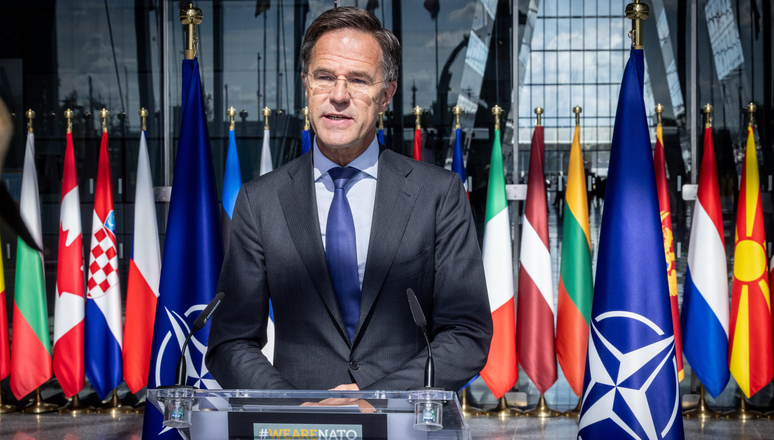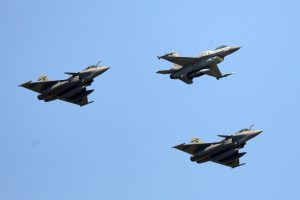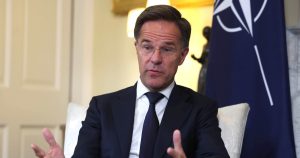NATO Launches ‘Eastern Sentry’ Mission After Russian Drone Breach in Poland

Brussels/Warsaw, NATO has announced the launch of Operation Eastern Sentry, a sweeping mission designed to bolster defenses along the Alliance’s eastern flank after Russian drones violated Polish airspace earlier this week. The initiative marks one of the most assertive demonstrations of collective security since Russia’s full-scale invasion of Ukraine in 2022, underscoring the alliance’s message that it will “defend every inch” of member territory.

Secretary-General Mark Rutte, speaking from Brussels on Friday, called the Russian drone incursion “reckless and unacceptable,” emphasizing that the violation of Polish airspace went beyond a technical breach and constituted a direct test of allied resolve. “The safety of Poland and all our allies is indivisible,” Rutte said. “Our response must match the seriousness of the threat.”
The newly announced mission involves coordinated air patrols, reinforced ground positions, and enhanced surveillance across the Baltic states and Poland. Denmark, France, the United Kingdom, and Germany have already pledged fighter jets, missile defense systems, and logistical support, with additional commitments expected in the coming days. General Alexus Grynkewich, NATO’s Supreme Allied Commander in Europe, described the mission as “a shield against escalation,” intended both to deter further Russian provocations and reassure populations living in border regions.
The operation also signals a shift from episodic responses to a more structured posture along NATO’s eastern border, resembling the permanent deterrence frameworks once seen during the Cold War.
Beyond the military theater, the incursion and NATO’s response carry deep economic implications. Poland, already bearing the brunt of Europe’s refugee inflows from Ukraine, now faces additional strains on infrastructure and budgets as defense and security spending rise. Business leaders in Warsaw expressed concern that heightened tensions could disrupt investment confidence in Central and Eastern Europe, with supply chains, energy corridors, and cross-border trade once again under scrutiny.
The agricultural heartlands of eastern Poland, which are already rattled by earlier episodes of grain import disputes and border closures, now find themselves on the frontline of geopolitical confrontation. Families in these regions speak of a growing climate of fear, with parents keeping children closer to home and communities preparing contingency plans in the event of further escalation. “We’ve lived with uncertainty since the war began, but this feels different,” said Maria Nowak, a mother of two from Lublin. “When drones cross into our skies, it feels like the war is no longer next door, it is here.”
The crisis reverberates far beyond Poland. For the Baltic states, Estonia, Latvia and Lithuania, the mission is both reassurance and necessity. Leaders in Tallinn and Riga have long warned that Russia’s hybrid tactics, from cyber intrusions to airspace violations, aim to test NATO’s cohesion. Operation Eastern Sentry, analysts say, is a signal to Moscow that those warnings are being taken seriously.
The operation also ties into broader energy and economic security questions. Eastern Europe’s reliance on NATO-backed corridors for liquefied natural gas imports, coupled with the ongoing modernization of military infrastructure funded in part by EU programs, highlights the interconnectedness of defense and economic frameworks.
Meanwhile, Russia has framed the drone incursion as “accidental,” with officials in Moscow dismissing NATO’s reaction as “hysterical.” But for families in border towns, that explanation rings hollow. “Accidents don’t keep happening in the same direction,” remarked Piotr Kaczmarek, a retired schoolteacher in eastern Poland. “We know what this is: intimidation.”
Politically, the mission is also a stress test for NATO cohesion at a time when allied capitals are juggling domestic challenges from inflation and energy transitions to electoral cycles that could reshape foreign policy. The United States, though not mentioned in Friday’s announcement, remains the backbone of NATO deterrence, and Washington’s stance will be critical in sustaining momentum.
For European leaders, the message is equally directed inward: reassurance for anxious public, and proof that NATO’s promise of collective defense remains credible. Rutte framed it starkly: “Citizens in Poland, Lithuania, or Germany must feel as safe as those in Paris or London. That is the essence of the Alliance.”

At a human level, the incursion and NATO’s new mission deepen the psychological strain of a continent living under the shadow of war. In cultural centers from Kraków to Tallinn, art exhibitions and civic forums now double as spaces for conversations about resilience and identity. Families recount the blending of everyday life with quiet preparations for emergency scenarios: stockpiling essentials, mapping evacuation routes, and discussing with children how to recognize the sound of air raid sirens.
For younger Europeans, particularly those born after 1989 who grew up with a borderless EU and relative peace, the crisis has sparked a sobering reassessment of what security means. “We thought NATO was a distant guarantee,” said 22-year-old student Aleksandra Kowalska. “Now it feels like it is the only thing between us and chaos.”
Operation Eastern Sentry will be closely watched in the weeks ahead, not only for its military effectiveness but also for its ability to stabilize markets, reassure anxious families, and deter further Russian provocations. Analysts warn that NATO’s challenge is not merely to respond but to sustain unity in the face of a long, grinding confrontation.
For now, the alliance has chosen visibility and readiness. Whether that will be enough to prevent escalation, and to shield Europe’s families, economies, and cultures from further shock, will be the true test of Eastern Sentry.






